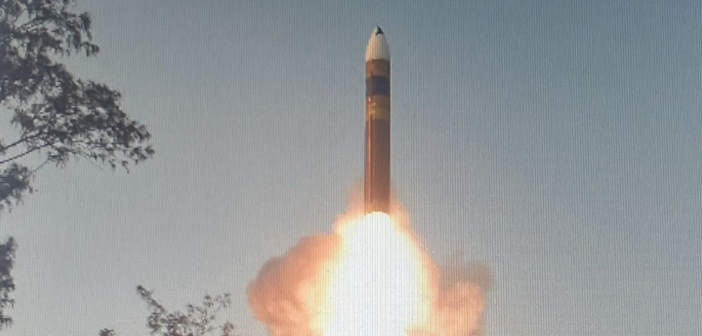On March 11, 2024, India successfully test-fired the Agni-5 missile equipped with MIRV (Multiple Independently Re-entry Vehicle) technology, a significant milestone in the nation’s strategic missile program. This accomplishment signifies India’s growing prowess in the field of advanced weaponry and strengthens its position as a major power on the global stage.
A Legacy of Self-Reliance: The IGMDP and Beyond
India’s missile journey began in the early 1980s with the ambitious Integrated Guided Missile Development Programme (IGMDP). Driven by the vision of Dr. APJ Abdul Kalam, the IGMDP aimed to make India self-sufficient in missile technology. This program led to the development of the iconic Agni series of ballistic missiles, forming the backbone of India’s credible minimum deterrence strategy.
The Agni missiles boast progressively longer ranges, with Agni-V reaching an intercontinental ballistic missile (ICBM) class range of over 5,000 kilometers. This accomplishment placed India in an elite group of nations possessing such advanced technology.
The success story doesn’t end there. India has developed and deployed a diverse arsenal encompassing Prithvi short-range ballistic missiles (SRBMs) for battlefield use, the BrahMos supersonic cruise missile for land, sea, and air launch platforms, and the Akash surface-to-air missile (SAM) for air defense. These advancements demonstrate India’s capability to develop and produce a wide range of missiles for various strategic and tactical applications.
The Cutting Edge: MIRV Technology and Its Significance
The recent Agni-5 MIRV test marks a qualitative leap in India’s missile capabilities. MIRV technology allows a single missile to carry multiple warheads, each independently targetable. This significantly enhances the missile’s destructive potential and complicates enemy defenses.
Prior to MIRV, a single enemy interceptor missile could potentially take down an incoming Indian missile. However, with MIRV, an enemy would need to deploy multiple interceptors to neutralize all the warheads, significantly increasing the defensive burden. This complexity adds a layer of deterrence and strengthens India’s second-strike capability.
Strategic Implications and the Evolving Landscape
India’s growing missile arsenal has significant strategic ramifications. It serves as a deterrent against potential adversaries, particularly in the context of its complex geopolitical neighborhood. Furthermore, it fosters greater self-reliance in defense matters, reducing dependence on foreign arms imports.
However, the development of advanced missile systems also raises concerns about regional stability and a potential arms race in South Asia. India maintains a policy of “no first use” regarding nuclear weapons, and responsible development and deployment of its missile program will be crucial in maintaining regional security.
Looking Ahead: Challenges and Opportunities
India’s missile program faces ongoing challenges. Continuing technological advancements are necessary to maintain a competitive edge. Additionally, ensuring robust command and control systems for these powerful weapons is paramount.
Despite these challenges, India’s missile program presents exciting opportunities. The success of the Agni-5 MIRV test paves the way for further development of next-generation missile systems, including hypersonic weapons and advanced ballistic missile defense capabilities. India’s growing expertise in this field could also lead to potential partnerships and technology collaborations with other nations.
A Force to Be Reckoned With
India’s missile program has come a long way since its inception. From the initial vision of self-reliance to the cutting-edge MIRV technology, the program has transformed India into a major player in the global missile arena. The successful launch of the Agni-5 MIRV signifies not just a technological achievement, but a strategic milestone that will undoubtedly shape India’s future security posture. As India continues to invest in its missile program, the world will be watching with keen interest to see how this force shapes the geopolitical landscape in the years to come.






